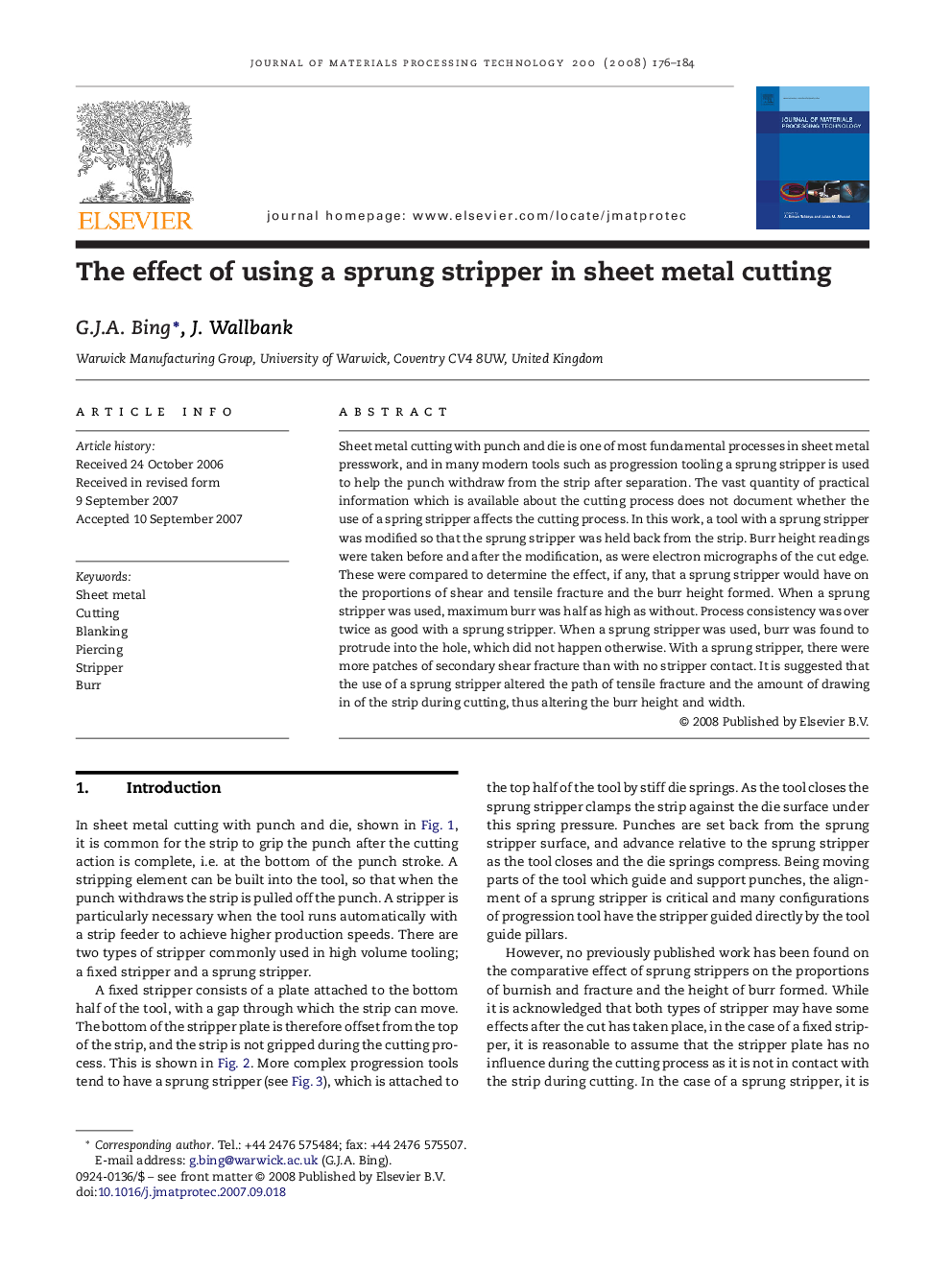| Article ID | Journal | Published Year | Pages | File Type |
|---|---|---|---|---|
| 798713 | Journal of Materials Processing Technology | 2008 | 9 Pages |
Sheet metal cutting with punch and die is one of most fundamental processes in sheet metal presswork, and in many modern tools such as progression tooling a sprung stripper is used to help the punch withdraw from the strip after separation. The vast quantity of practical information which is available about the cutting process does not document whether the use of a spring stripper affects the cutting process. In this work, a tool with a sprung stripper was modified so that the sprung stripper was held back from the strip. Burr height readings were taken before and after the modification, as were electron micrographs of the cut edge. These were compared to determine the effect, if any, that a sprung stripper would have on the proportions of shear and tensile fracture and the burr height formed. When a sprung stripper was used, maximum burr was half as high as without. Process consistency was over twice as good with a sprung stripper. When a sprung stripper was used, burr was found to protrude into the hole, which did not happen otherwise. With a sprung stripper, there were more patches of secondary shear fracture than with no stripper contact. It is suggested that the use of a sprung stripper altered the path of tensile fracture and the amount of drawing in of the strip during cutting, thus altering the burr height and width.
